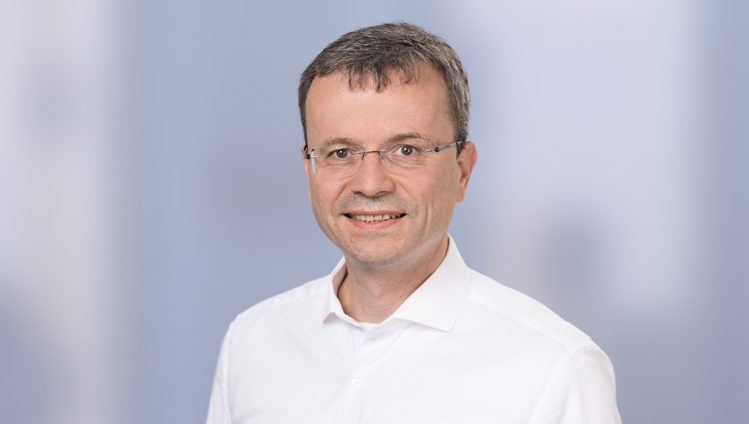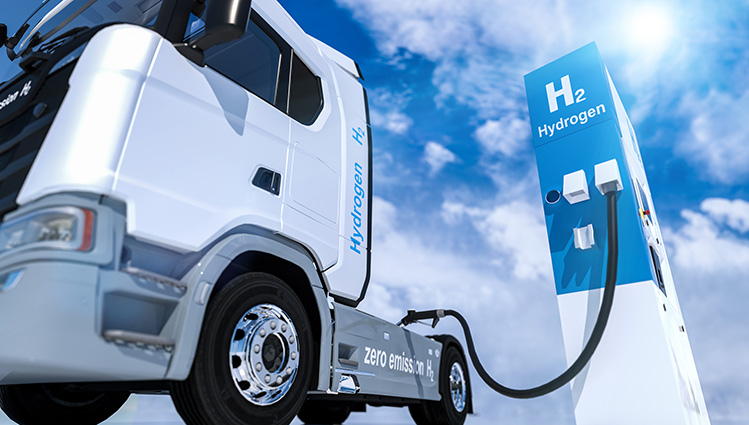"Nothing to fear for an engineer.” What was true for Gyro Gearloose in Duckburg is also true for our engineering colleagues at our headquarters in Hanover and around the world. Nevertheless, their tasks in vehicle development – and especially around powertrain, emissions and thermal management – are particularly complex at the moment. On the one hand, society is demanding a rapid transformation of individual mobility, and this requires appropriate technologies. On the other hand, the right answers are far from being found in all areas of the mobility industry, so that even the "old" technologies will not disappear from the scene overnight. Dr. Lutz Scholten, head of the Emission Reduction Solutions business segment, explains why it makes sense to think in multiple tracks in the coming years and generate as many synergies as possible.
Old hoses in new vehicles

"Nowadays, we are often confronted with the question of why we continue to work on the combustion engine at all, when it will soon be completely replaced by electric motors and the like," says the trained engineer. On the one hand, that's not true for all areas of transportation – more on that later. On the other hand, he has been doing his job for more than 30 years, has experienced the speed of innovation at first hand and believes that the end of the development road has not yet been reached: "20 years ago, a six-cylinder sedan was the ultimate in Germany, with a powerful three-liter engine and a wonderful sound. But the fuel consumption figures were, of course, lousy from today's perspective."
Today, it is possible to generate almost the same power with a three-cylinder hybrid, equipped with turbochargers, automatic transmission and exhaust gas recirculation – thanks, among other things, to the hose and line systems that he and his team have constantly refined. This is because, particularly in the area of exhaust emissions, legal requirements around the world have become increasingly stringent over the years, as is well known. "Personally, I'm delighted every time the EU or another regulatory authority sets even stricter rules for how clean a vehicle has to be," smiles Dr. Scholten, "because then there's another new challenge that we can solve together with the vehicle manufacturers. And we certainly still have room for improvement there."
Technology opposites are not always mutually exclusive
And how does that fit in with the transformation toward sustainable drive concepts? "Quite simply," Dr. Scholten knows, "for the most part, we are focusing on those technologies that can be used in more than one drive concept." That's because almost 70 percent of the vehicle components – including the hoses and lines for thermal management, for example – can also be used in the same, similar or further developed form in vehicles that are powered electrically by a battery or fuel cells. "Wherever an electrophysical reaction takes place, we can transfer our existing technologies well and thus help shape the smooth transition from the internal combustion engine to other drive concepts." After all, simply flipping the switch and focusing on just one mobility scenario is not an option, either on the road or in Continental's development offices.
The days of the diesel truck are numbered
This is particularly true for the commercial vehicle sector. "Unlike passenger cars, where manufacturers have committed to battery-electric drive for the coming years, this concept is not yet the be-all and end-all for the logistics and transit sector," says Dr. Lutz Scholten. To replace diesel technology, with which most trucks worldwide are still on the road, higher ranges and shorter refueling times are needed than an electric drive can currently provide.
 One possible solution lies in fuel cell technology. That's why he and his team are working on the permeation properties of hose and pipe lines, for example. He explains: "Even with diesel trucks, it is important that the lines do not release fuel or its vapors to the outside world. This is even more important with hydrogen, because its molecules are even smaller." Moreover, a fuel cell also needs compressed air to react with the hydrogen. "In that respect, the setup is not that different from that of a turbocharged internal combustion engine."
One possible solution lies in fuel cell technology. That's why he and his team are working on the permeation properties of hose and pipe lines, for example. He explains: "Even with diesel trucks, it is important that the lines do not release fuel or its vapors to the outside world. This is even more important with hydrogen, because its molecules are even smaller." Moreover, a fuel cell also needs compressed air to react with the hydrogen. "In that respect, the setup is not that different from that of a turbocharged internal combustion engine."
In Scholten's view, another transferable technology is the heatable exhaust pipes originally developed for passenger car diesel engines. As is well known, these emit not only CO2 but also harmful nitrogen oxides, which are rendered harmless by injecting a solution of urea. However, urea is sensitive and quickly coagulates if temperatures are too cool. "We therefore developed electrically heatable lines years ago to prevent blockages in the line system," he knows.
There is a similar problem with fuel cells, because here, water vapor is produced as exhaust gas, which settles on the line walls and freezes into ice at subzero temperatures. "Here, the principle is so similar that all we really have to do is design the lines to the right geometry and diameter and we can use them in fuel cell vehicles."
Beyond that, of course, there are technologies with high continuity. "Large trucks, for example, need high-pressure hydraulic systems so that the steering axle can be moved at all while stationary," Dr. Scholten explains. "And it makes no difference whether the vehicle is powered by a diesel engine, an electric battery or a fuel cell." Nevertheless, these components are also subject to a continuous process of improvement and efficiency enhancement. "We cannot and will not rest on our laurels in any of these areas, because from my point of view, diesel will still be in use for a very long time, especially in commercial vehicles."
With hydrogen into the emission-free future?

The new sales and competence center for powertrain technology in Yokohama, Japan, is now working to ensure that this will change in the not too distant future. "The Asians are at least one step ahead of us when it comes to hydrogen," admits Dr. Lutz Scholten. "So it's a logical step for us to strengthen our cooperation with the drive specialists of the local technology leaders right on their doorstep."
With its strategy adopted back in 2017 to become a "Hydrogen Society," Japan – a country surrounded by water – offers ideal conditions. Rumor has it that as many as 800,000 hydrogen-powered vehicles will be produced and registered locally there – per year – starting in 2030. "And the fact that hydrogen also offers the opportunity for a truly emission-free global society beyond individual mobility was also recently emphasized again by our Supervisory Board member Professor Wolfgang Reitzle," concludes Dr. Lutz Scholten. He and his team want to play an active role in shaping this transformation – by transferring the knowledge they have accumulated over decades about "old" technologies to their successors.